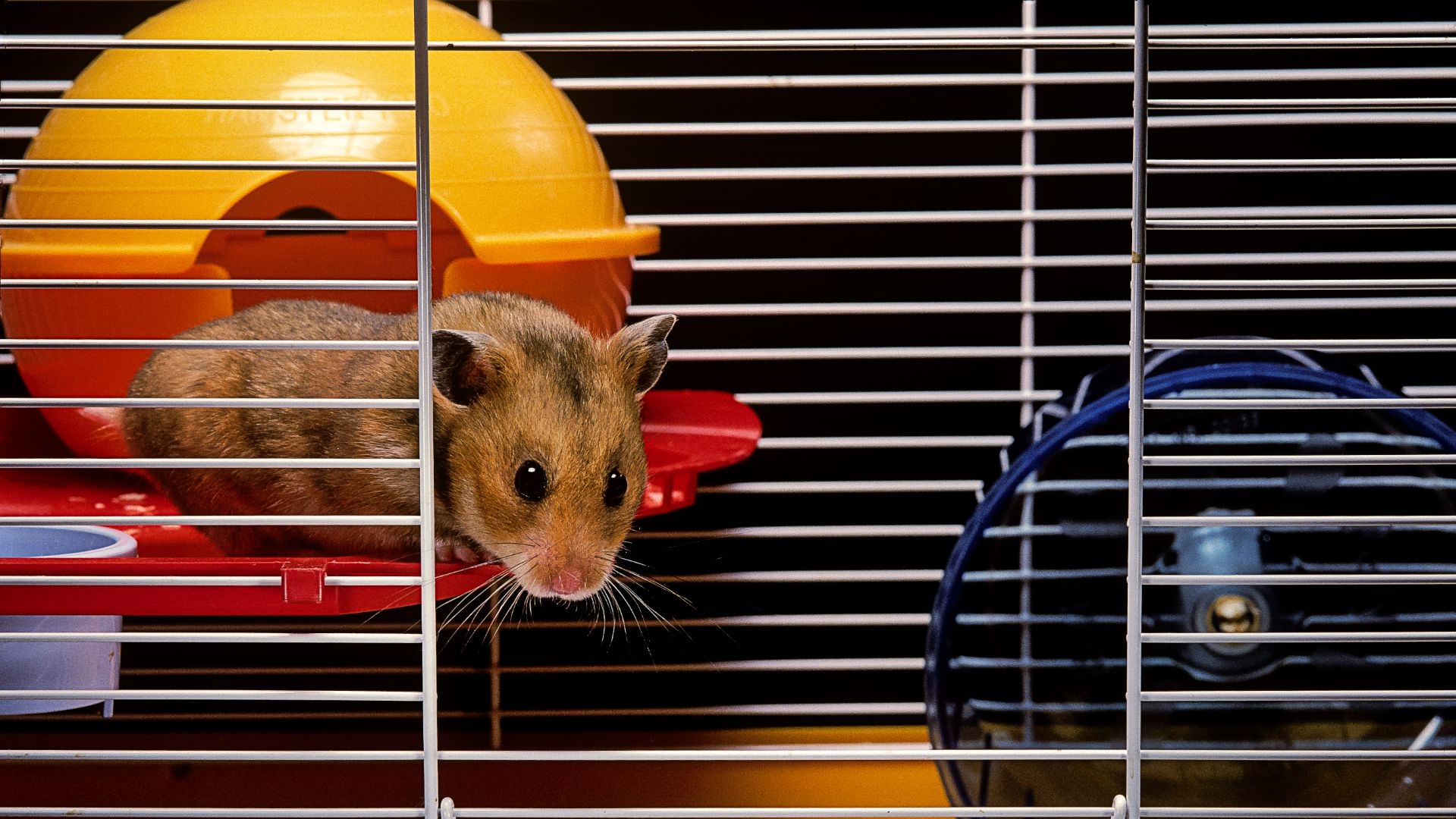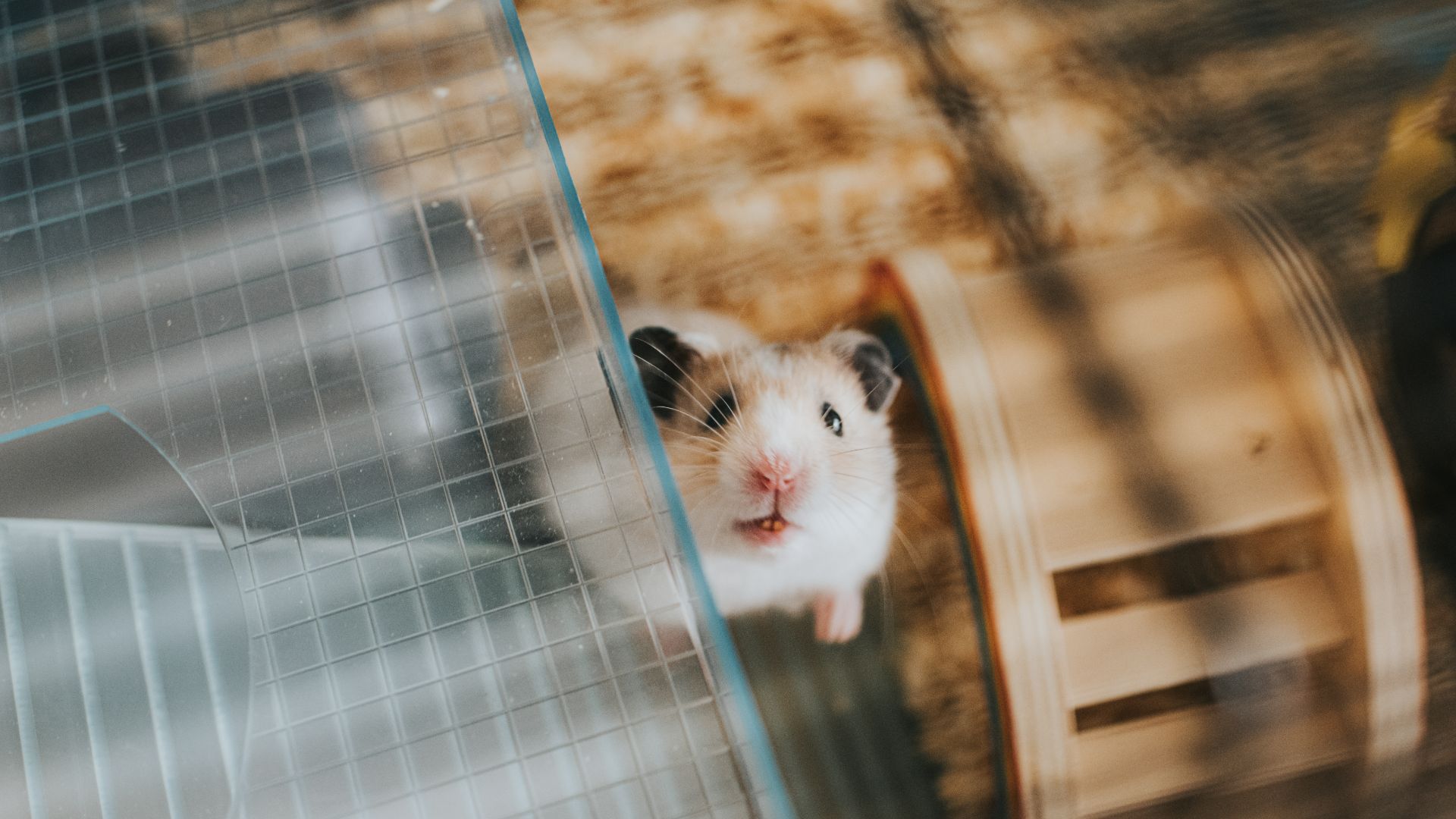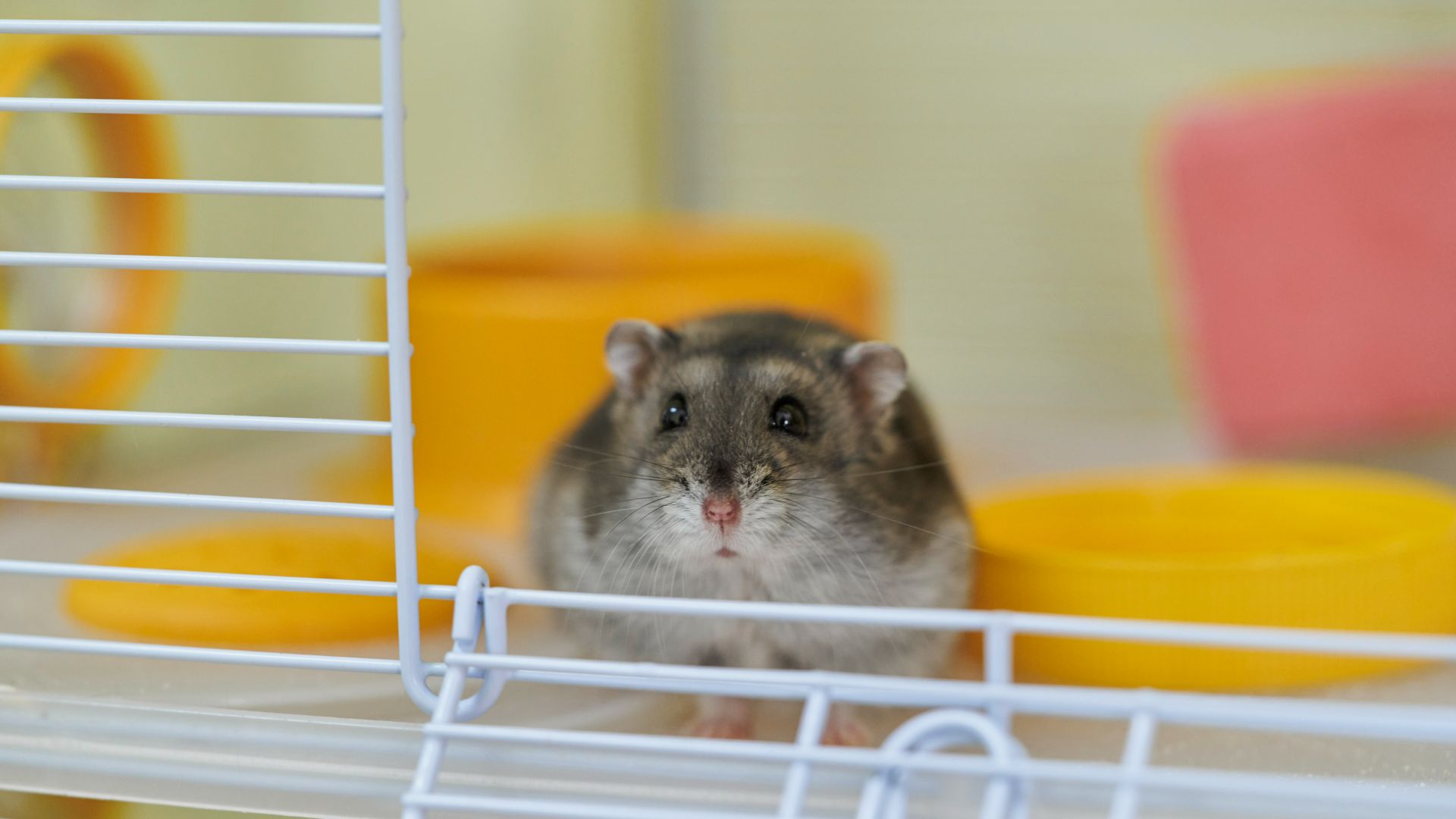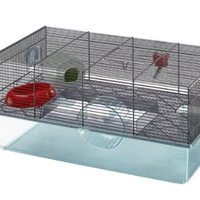How big should a hamster cage be? Our vet weighs in and explains
If you want to know how big should a hamster cage be, you’re at the right place. We spoke to a vet to find out exactly how much space your hamster needs.

How big should a hamster cage be? This is important to know if you’ve got a tiny furry friend on your hands. Hamsters are so small after all, so surely they shouldn’t need that much space, right?
You wouldn’t be the only one to think this. However, hamsters need plenty of space to support their natural habits. Hamsters love burrowing, exploring, and playing around. So investing in one of the best hamster cages that has enough room to accommodate all these behaviors is very important.
We spoke to vet, Dr. Rebecca MacMillan to find out exactly how big a hamster cage should be and the exact dimensions she recommends.
How big should a hamster cage be

Dr. MacMillan says, “I would always recommend getting the largest-sized cage possible for your hamster. Both dwarf and Syrian hamsters require a minimum of 40in x 20in x 20in of unbroken floor space. This will give your hamster plenty of room to play and explore, allowing you to house an exercise wheel and toys comfortably.”
You should also think about how much of the cage’s floor space is taken up with other elements, such as wheels, food bowls, toilet areas, and bedding areas. Make sure there’s plenty of consideration for that when picking your hamster cage.
Although it’s important to bear in mind the different types of hamsters, roughly speaking, even smaller hamsters such as dwarf hamsters, Russian hamsters, or Chinese hamsters, also need plenty of space like larger Syrian hamsters. As you’ll often keep smaller hamsters in pairs, then there should be plenty of space to make sure they each have enough room (note: you should never keep more than one Syrian hamster in the same cage).
We named this the best overall hamster cage in our buying guide. It is designed specifically for hamsters and comes with all the essentials: an exercise wheel, a drinking bottle, a nest, and even a feeding bowl—everything your hamster needs to be happy and healthy.
Why do hamsters need such large cages?
In the wild, hamsters can often roam for many miles at a time, so making sure there’s enough to stimulate and entertain your hamster in their cage is ideal for having a happy pet.
Obviously, it’s difficult to recreate that in the home environment. And, of course, hamsters are far less likely to be given free roam of larger areas of your home. It’s therefore imperative that you give them plenty of space to burn off all that natural energy.
As large a cage as you can afford, accommodating and practical is always a good idea. Also make sure you think about other stimulation in the cage, such as wheels, toys, and things for them to chew.
How to choose the best hamster cage?
When choosing a hamster cage, there are a few main things to consider. Dr. MacMillan advises, “The ideal cage should also have a layer that is deep enough base to house plenty of burrowing material. A large glass tank can tick these boxes or a design that features a cage over the top of a deep plastic box or base.”
She also adds, “The hamster cages with multiple pipes and chambers should be avoided, as should any cages with a lot of wire mesh floors which can be uncomfortable for hamsters to walk on, causing foot injuries.”
Other things to consider include:
- Style of hamster cage
- Ease of cleaning
- Ventilation possibilities
Types of hamster cage
There are three general styles of hamster cages – wire cages with a plastic base, an all-plastic modular construction, and aquarium-style cages. All have their pros and cons and should be carefully considered. After all a cage, is just one of the ways to keep your hamster happy.
In terms of creating the most amount of space, fun, and excitement for your hamster, modular systems that can be expanded offer maximum flexibility. It’s important however to remember that there should still be one large “continuous” expanse of space, even if you have multiple tubes and modules coming from the main area.
If you opt for a traditional wire-sided cage, bear in mind the type of hamster it is for. Smaller hamsters might be able to escape or get stuck in between thicker wires which might be OK for larger hamsters. Wire-sided cages can be problematic for excessive chewing. If you opt for this type of cage, you should ensure that there are plenty of other more appropriate things around for them to chew – such as some of the best hamster toys.
Trixie Suspension Bridge Small Pet Hammock
This toy is designed to keep your hamster busy with a bridge, rope ladder, hoop, and ring — there are endless activities to keep your hamster entertained.
Aquarium-type hamster cages have their advantages, as they offer a bit more security for those who are anxious about the hamster escaping. But it tends to be hard to find one that offers an adequate amount of space, and they can also be quite heavy to move around.
Best type of hamster cage for cleaning

It’s extremely important to set up a good cleaning routine for your hamster cage.
In terms of practicalities, the simpler the cage, the easier it is to keep clean. Wire-sided cages with plastic bases tend to be the simplest to keep clean. With these, you can easily remove the sides, empty out whatever’s in the base, and reattach it in a matter of minutes.
Modular construction cages which require a little more effort to deconstruct and reconstruct can be a bit more complex to clean fully. With this type of cage, you might want to only deep clean the main area regularly, opting to spot-clean other supplemental areas depending on how much they are used. Think carefully about how much time you have to dedicate to cleaning a hamster cage and its various add-ons if you intend to opt for this type of cage.
Since aquarium-style hamster cages are heavy to move, cleaning can be a little tricky too.
Be sure to check out our guide on how to clean a hamster cage, too.
Best types of hamster cages for ventilation

It’s important to think about the environment that your hamster’s cage will be placed in. That means it should be well-ventilated (but not draughty), not disturbed by too much noise, not placed in a high-traffic area, and well-lit in a regular pattern.
Wire-sided cages are great for ventilation, but if there’s any kind of draught in the house, the hamster will be less protected from it. Make sure that if you opt for a modular plastic hamster cage or an aquarium-style hamster cage, it is properly ventilated and is placed somewhere that regularly benefits from fresh air coming into the room.
Found this helpful? Check out How to set up a hamster cage and Why is my hamster sleeping in the corner of their cage?
PetsRadar Newsletter
Get the best advice, tips and top tech for your beloved Pets
Amy Davies is a freelance writer and photographer with over 15 years experience. She has a degree in journalism from Cardiff University and has written about a huge variety of topics over the years. These days she mostly specialises in technology and pets, writing across a number of different titles including TechRadar, Stuff, Expert Reviews, T3, Digital Camera World, and of course PetsRadar. She lives in Cardiff with her dog, Lola, a rescue miniature dachshund.



